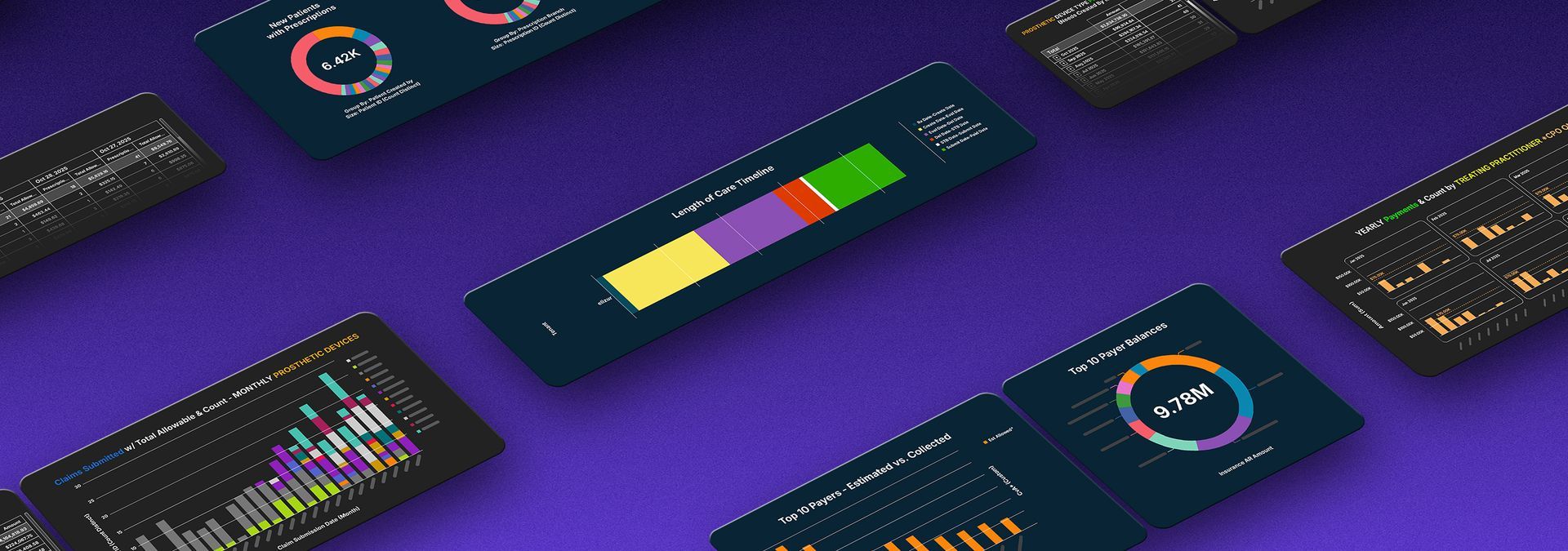What's The Difference? A New Blog Series from Nymbl
Native SaaS Software vs. Converted On-Premise Software
This is a multi-part blog series on the important differences between software applications that were designed as SaaS solutions from inception vs. on-premise applications that are converted to SaaS.
What Every O&P Practice Should Know
Building software applications as Software-as-a-Service (SaaS)-based solutions from inception offers several advantages over those that have been converted from an on-premise application to a cloud-based model.
Welcome to Nymbl Systems’ multi-part series of educational blogs that are designed to help O&P practices understand the important differences between its practice management solution and other solutions that are available in the market.
As other vendors attempt to convert their antiquated solutions into SaaS-based applications, it is important for practice leaders to understand the potential flaws and gaps in this approach. And because there are so many, we’ve chosen the top 10 topics to explore in separate posts over the next six days.
Everything from system architecture, scalability, and security to productivity and user experiences will be covered. We hope you will join us on this six-day journey. If you aren’t sure about what SaaS-based software vs. cloud-based, you may want to check out one of our recent blogs on this topic first.
Let’s start with the most fundamental difference: The Architecture
When a software application is built as a SaaS solution from the very beginning, its entire architecture is intentionally designed to take full advantage of cloud environments. This means that every component of the software—from data storage and processing to networking and security—is specifically engineered to work efficiently within a cloud infrastructure.
Key Things to Know:
- Cloud-Native Design : A SaaS application is built with a cloud-native mindset, meaning it leverages cloud services, tools, and best practices right from the start. For example, the application might use distributed databases, microservices, and containerization, which are all tailored for the cloud.
- Performance Optimization : The architecture is crafted to handle the demands of cloud computing, such as managing large volumes of simultaneous users, ensuring low latency, and providing high availability. By being cloud-native, the application can dynamically allocate resources based on demand, ensuring consistent performance even during peak usage times.
- Scalability : A SaaS application designed for the cloud can scale horizontally with ease. This means that as more users or data are added, the system can simply add more instances or services to handle the load without significant reconfiguration. In the fast-paced world of SaaS, technology evolves so rapidly that even systems designed with future scalability in mind just five years ago may now seem outdated. Autoscaling, once a cutting-edge approach, has become a necessity to handle today’s growing demands, especially with the advent of AI. As AI applications generate and process massive amounts of data, the ability to automatically adjust resources in real-time is crucial for maintaining efficiency and performance. Staying ahead requires constant adaptation, leveraging the latest technologies to ensure that systems are not just scalable but also optimized for the challenges of tomorrow.
- Reliability : Cloud-native SaaS solutions are typically built with redundancy and fault tolerance in mind. This means that the system is designed to continue operating smoothly even if some components fail. For example, data might be replicated across multiple geographic locations to prevent loss during an outage, and services can be automatically rerouted to avoid downtime.
Contrast with Converted Applications
- Legacy Constraints : On the other hand, applications that were originally built for on-premise environments often come with legacy constraints. These applications might rely on a monolithic architecture, where all components are tightly coupled and interdependent. This can make it challenging to adapt the application to a cloud environment, where flexibility, modularity, and distributed computing are key.
- Performance Bottlenecks : Because converted applications were not originally designed for the cloud, they may encounter performance bottlenecks. For instance, a system that was built to run on a single server might struggle to perform well when distributed across multiple cloud servers, leading to inefficiencies.
- Resource Utilization : In a cloud environment, efficient resource utilization is critical. SaaS applications built from the beginning with cloud in mind are designed to optimize how they use computational power, storage, and networking. In contrast, converted applications might be less efficient because they weren’t originally designed to scale or operate in the dynamic environment of the cloud.
In summary, when an application is designed as a SaaS solution from the start, its architecture is optimized for the unique demands and opportunities of cloud computing, leading to better performance, easier scalability, and greater reliability compared to applications that were later adapted from an on-premise setup.
To see Nymbl for yourself, schedule a call with one of our Nymbl experts. .




